|
Digestive diseases affect 60 to 70 million Americans, accounting for over 100 ambulatory care visits, 13.5 million hospitalizations, and 236,000 deaths annually according to statistics from the National Institutes of Health (http://www.digestive.niddk.nih.gov/statistics/statistics.aspx#all). Maintenance of intestinal health is greatly aided by the early, rapid, and accurate diagnosis of disorders. Toward that end, various noninvasive tests have been developed that allow for testing on stool samples.
Among the causes of gastrointestinal disease, bacteria are key elements. We are normally host to a spectrum of bacteria that are of symbiotic importance. The collection of our resident bacteria, commonly referred to as the microbiome, can change when invaded by certain pathogenic strains of bacteria. Gastrointestinal infections affect more than 200 million people, resulting in 2.3 million ambulatory care visits, 450,000 hospitalizations, and over 4300 deaths annually (ibid). Rapid and accurate detection of enteric pathogens can help diagnose and treat maladies before they progress. Classical microbiological testing often requires days for identification using the appropriate growth conditions. Recognizing the need for accurate and faster detection, mass spectrometric methodologies have been adapted to aid in the identification of bacterial strains. A major breakthrough in such analysis came with the development of matrix assisted laser desorption ionization-time of flight mass spectrometry (MALDI-TOF), which allows for the proteomic “fingerprinting” of bacteria. These analyses reveal a spectrum of proteins that have been assembled into databases against which candidate samples are compared. As a result, it is possible to accurately identify bacterial samples in as little as 11 minutes.
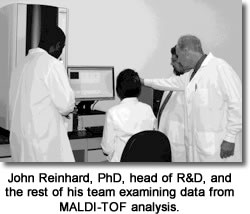 Other technologies are also increasing the diagnostic power of the microbiology laboratory. The Vitek-2 system, for example, allows for both the identification and the antibacterial sensitivity of candidate organisms. Other technologies are also increasing the diagnostic power of the microbiology laboratory. The Vitek-2 system, for example, allows for both the identification and the antibacterial sensitivity of candidate organisms.
While bacteria are a significant contributor to gastrointestinal pathology, inflammatory bowel disease (IBD) is relatively prevalent and primarily comprises two disorders, ulcerative colitis (UC) and Crohn's disease (CD). Both are autoimmune disorders in which cell-mediated immunity (principally T cells) is directed against cells of the large and small intestine. UC is a chronic inflammatory disease primarily affecting the colonic mucosa. The extent of colonic involvement is variable. In the most limited form the condition may be restricted to the distal rectum, while in its most extended form the entire colon is involved.
The incidence of UC has been increasing in the Western world since the early 1950s, largely attributed to better and more uniform diagnostic criteria. More recent trends indicate a change in the epidemiology of UC, with previously low-incidence areas now reporting a progressive rise in incidence. The Western literature typically reports an incidence of approximately 6 to 8 cases per 100,000 populations and an estimated prevalence of approximately 70 to 150 cases per 100,000 populations.
The definitive diagnosis of either Crohn's or UC is made by endoscopic examination. In addition to endoscopy, certain fecal tests can provide diagnostic benefit in the identification of these disorders. Both Crohn's and UC are autoimmune disorders, and inflammatory cells are found both at lesion sites and in the feces. Measurement of inflammatory cell markers provides a means of detecting active inflammation in the intestine. Examples of such markers include lysozyme and alpha-1 antichymotrypsin.
Microscopic Examination for Ova and Parasites
Microscopic screening of stool is among the oldest and most accurate methods for assessing the presence of both single-celled and multicellular parasitical infection within the GI tract.
The visualization of organisms via microscopy provides one of the most definitive forms of medical confirmation of the existence of infectious agents and is of particular value in relation to the diagnosis of gastrointestinal parasitic disease. Typically, samples are taken from multiple stool specimens collected on consecutive days. Monocellular parasites may be detected under light microscopy with the utilization of specialized staining techniques. The tiny and nearly transparent microbes become clearly visible when properly stained and provide the visual evidence for a trained medical microscopist to both identify the organism in question and its relative concentration. Multicellular parasites, including tapeworms, roundworms, and flukes, can be identified microscopically, and in some cases by the naked eye alone. The gross presence of tapeworm segments or entire bodies of roundworms provides definitive evidence of infection. Microscopically, visualization of proglottids, eggs, or cysts as well as adult fluke organisms provides the specific evidence needed to identify these infectious parasites.
In some cases, relatively harmless parasites can appear so similar to their pathogenic relatives that other forms of testing such as ELISA are required to differentiate between them. An example of this would be in the case of Amoeba histolytica and Dientamoeba coli. The latter can exist without evidence of disease in the colons of some people. In many instances, it may be indistinguishable from Entamoeba histolytica when viewed microscopically. In such cases, confirming serologic or salivary antibody testing can resolve the question and confirm the diagnosis.
The ability to observe the microscopic contents of the GI tract also provides for quick identification of numerous pathogenic and potentially pathogenic organisms. Many times, combinations of these organisms lend clues as to the origins of infection, thereby facilitating the clinician's ability to not only treat the condition but also counsel the patient in ways calculated to avoid reinfection. The observer may also get a sense of the relative concentrations of the microbes is question. One organism that frequent causes gastrointestinal dysfunction is Blastocystis hominis. While not unequivocally classified as pathological, its presence in moderate to large quantities evidences clear dysbiosis, usually associated with clinical signs and symptoms. Undigested yeast may appear in ova/parasite microscopic exams. These findings are typically associated with weak digestion and do not represent an invasive or infective state of the yeast organisms observed, the yeast being dietary in origin.
Diagnos-Techs offers stool analysis of ova and parasites (GP2) as a stand-alone test or as part of a comprehensive gastrointestinal study (GI-01 and GI-02).
Inflammatory Markers
Lysozyme
The two primary types of inflammatory bowel disease are Crohn's disease and UC. Collagenous colitis, lymphocytic colitis, and diversion colitis are more recently recognized inflammatory bowel diseases. Infection with parasites or bacteria may also cause gut inflammation.
Endoscopic evaluation with histopathological tissue sampling is generally considered indispensable in the investigation of a patient with suspected intestinal inflammation. Stool samples obtained during a sigmoidoscopy are needed to analyze for evidence of a bacterial or parasitic infection.
The human immune system defends the body against foreign substances using physical, chemical, and biological mechanisms. Such substances include microorganisms such as bacteria, viruses, and fungi. The natural immune system is the first defense line comprising all mechanisms that resist infection. Despite a frequent exposure to a variety of potential pathogenic microorganisms, intestinal infection of bacterial agents rarely occurs in the gastrointestinal tract of a healthy subject. The membrane lining the digestive tract is among the physical barriers against invaders. This barrier is further defended by a nonspecific antimicrobial system consisting of numerous peptides called antimicrobial peptides. Including lysozymes, these antimicrobial peptides attack the bacterial cell wall, causing loss of structural integrity and collapse of the bacterial cell. Lysozyme can be detected in many body tissues and secretions, including saliva, mucous secretions, and feces ultrafiltrate. In the gut, excess lysozyme may be found in diseased mucosa due to bowel inflammation. In active inflammatory bowel disease, elevated fecal loss of lysozyme is expected as part of increased enteric protein loss. It was found that lysozyme directly correlates with the clinical status and severity of the disease. Research shows that measuring fecal lysozyme concentration was helpful in differentiating normal individuals and patient with irritable bowel syndrome (IBS) from patients with inflammatory bowel disease (IBD). Fecal lysozyme may therefore be used as a reliable tool both in diagnosis and in follow-up in the outpatient clinic for gastroenterology.
Diagnos-Techs offers the lysozyme test (MB3) as a stand-alone test or as part of a comprehensive gastrointestinal study (GI-01 and GI-02).
Chymotrypsin
Chymotrypsin is one of many secretions of the exocrine pancreas. Chymotrypsin is an enzyme that serves to break down proteins in the small intestine, thereby enabling their absorption. In cases of exocrine pancreatic insufficiency, chymotrypsin secretion declines, resulting in low levels of chymotrypsin in the stool. In pancreatic insufficiency, we see a decline in output of not only chymotrypsin but also other pancreatic secretions, such as amylase and lipase. This makes stool chymotrypsin a convenient marker of overall pancreatic output and thus digestive capacity. Low stool chymotrypsin is frequently seen in acute or chronic pancreatitis, cystic fibrosis, diabetes (types 1 and 2), and functional exocrine pancreatic insufficiency where no organic cause is identified.
Alpha 1-Antichymotrypsin
Alpha 1-antichymotrypsin is a protein produced primarily during the acute phases of inflammation. It serves to prevent excess tissue damage that can result from proteolytic enzymes that are released by mast cells and neutrophils during the acute inflammatory response. Stool alpha 1-antichymotrypsin levels increase at times of GI inflammation, particularly of the small intestine. High stool levels of this protein are typically associated with inflammatory bowel diseases, especially CD (likely due to its tendency to affect the small intestine), but it can also be elevated in acute intestinal inflammation secondary to other causes.
Diagnos-Techs offers the test for alpha 1-antichymotrypsin (MB4) as a stand-alone test or as part of a comprehensive gastrointestinal study (GI-01 and GI-02).

References
Braun OH, Grosse KP, Riemann JF, Schmidt H. Lysozyme concentrations in the intestinal mucosa in malabsorption syndromes and chronic inflammatory intestinal diseases. Klin Padiatr. 1984 Jan–Feb;196(1):36–39.
Braun OH, Nagel W. Lysozyme in children with acute and chronic inflammatory intestinal diseases Padiatr Padol. 1985;20(2):143–150.
Dick W. Lysozyme: basic facts and diagnostic importance. Fortschr Med. 1982 Jul 8; 100(26):1230–1234.
Hemrika MH, Costongs GM, Engels LG, Bos LP, Janson PC, Flendrig JA. Clinical relevance of lysozyme in the faeces. Neth J Med. 1989 Apr; 34(3–4):174–181.
Klass HJ, Neale G. Serum and faecal lysozyme in inflammatory bowel disease. Gut. 1978 Mar; 19(3):233–239.
Verweij JJ, Laeijendecker D, Brienen EA, van Lieshout L, Polderman AM. Detection and identification of entamoeba species in stool samples by a reverse line hybridization assay. J Clin Microbiol. 2003;41(11):5041–5045. doi:10.1128/JCM.41.11. PMC262518.

For more information about Diagnos-Techs, please visit our website at www.diagnostechs.com or call today and speak with one of our medical advisors, 800-878-3787.
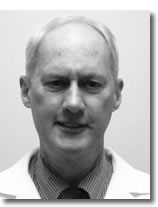 John Reinhard, PhD, studied chemistry with Dr. John Neumeyer at Northeastern University (Boston, MA) before attending the Massachusetts Institute of Technology, where he earned a PhD in biochemistry in 1980, under Dr. Michael Moskowitz. He was a postdoctoral fellow in pharmacology at Yale University, under the supervision of Dr. Robert Roth. Dr. Reinhard joined the Wellcome Research Laboratories in 1982 as a senior scientist and remained as a principal scientist through two mergers, ending as a clinical researcher at GlaxoSmithKline. In 2001, Dr. Reinhard cofounded Trelion Pharmaceuticals (now Avera) and later served as senior director of clinical research at Epix Pharmaceuticals (Lexington, MA), associate medical director at Repligen Corp. (Waltham, MA), and senior director of clinical research at Ore Pharmaceuticals. In 2010, Dr. Reinhard cofounded Rhine Pharmaceuticals (Bellevue, WA) before assuming his current position as director of research, development, and medical at Diagnos-Techs. He has served on NIH advisory boards (intramural and extramural), has authored 76 peer-reviewed publications, and is listed as inventor on 6 patents. John Reinhard, PhD, studied chemistry with Dr. John Neumeyer at Northeastern University (Boston, MA) before attending the Massachusetts Institute of Technology, where he earned a PhD in biochemistry in 1980, under Dr. Michael Moskowitz. He was a postdoctoral fellow in pharmacology at Yale University, under the supervision of Dr. Robert Roth. Dr. Reinhard joined the Wellcome Research Laboratories in 1982 as a senior scientist and remained as a principal scientist through two mergers, ending as a clinical researcher at GlaxoSmithKline. In 2001, Dr. Reinhard cofounded Trelion Pharmaceuticals (now Avera) and later served as senior director of clinical research at Epix Pharmaceuticals (Lexington, MA), associate medical director at Repligen Corp. (Waltham, MA), and senior director of clinical research at Ore Pharmaceuticals. In 2010, Dr. Reinhard cofounded Rhine Pharmaceuticals (Bellevue, WA) before assuming his current position as director of research, development, and medical at Diagnos-Techs. He has served on NIH advisory boards (intramural and extramural), has authored 76 peer-reviewed publications, and is listed as inventor on 6 patents.
 Raymond Dent, ND, was awarded his doctorate in naturopathic medicine from John Bastyr College of Naturopathic Medicine in Seattle, Washington, in 1982. He has practiced both privately and with teams of holistically oriented medical doctors and labs over the past 28 years. Dr. Dent has taught courses at Bastyr University, authored articles on alternative and integrated health care, and appeared on television and radio broadcasts. Dr. Dent's practice is broad in scope and utilizes therapeutic nutrition, homeopathy, and botanical medicine as well as innovative procedural approaches. Raymond Dent, ND, was awarded his doctorate in naturopathic medicine from John Bastyr College of Naturopathic Medicine in Seattle, Washington, in 1982. He has practiced both privately and with teams of holistically oriented medical doctors and labs over the past 28 years. Dr. Dent has taught courses at Bastyr University, authored articles on alternative and integrated health care, and appeared on television and radio broadcasts. Dr. Dent's practice is broad in scope and utilizes therapeutic nutrition, homeopathy, and botanical medicine as well as innovative procedural approaches.
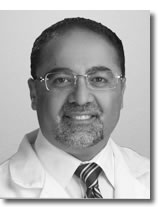 Kamal Henein, MD, graduated from Zagazig University Medical School in Cairo, Egypt, in 1997. Dr. Kamal practiced medicine and general surgery for four years before joining Diagnos-Techs as a medical consultant. His practice focused mostly on women's health and reproduction. As a medical and science liaison who introduces bench research into clinical application, Dr. Kamal provides medical consultation to physicians, naturopathic doctors, and pharmacists involved in endocrine evaluation and patient management. Dr. Kamal has 12 years of medical experience, specializing in functional medicine. Kamal Henein, MD, graduated from Zagazig University Medical School in Cairo, Egypt, in 1997. Dr. Kamal practiced medicine and general surgery for four years before joining Diagnos-Techs as a medical consultant. His practice focused mostly on women's health and reproduction. As a medical and science liaison who introduces bench research into clinical application, Dr. Kamal provides medical consultation to physicians, naturopathic doctors, and pharmacists involved in endocrine evaluation and patient management. Dr. Kamal has 12 years of medical experience, specializing in functional medicine.
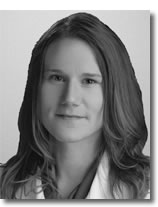 Brandy Webb, ND, received her doctorate of naturopathic medicine from Bastyr University after earning her biochemistry degree from Seattle University. While pursuing her pre-medicine studies, Dr. Webb worked at the Fred Hutchinson Cancer Research Center studying allogeneic bone marrow transplantation. Following medical school, Dr. Webb promptly became a teaching fellow, clinical resident, and ultimately an instructor at Bastyr, teaching advanced doctoral courses in pharmacology, gastroenterology, clinical diagnosis, and gynecology. She also practices privately, specializing in functional medicine and endocrinology, with particular expertise in hormonal restoration and fertility optimization in both men and women. Dr. Webb has authored health-related articles, delivered communitywide lectures, and been featured in local radio programs and national print publications. Brandy Webb, ND, received her doctorate of naturopathic medicine from Bastyr University after earning her biochemistry degree from Seattle University. While pursuing her pre-medicine studies, Dr. Webb worked at the Fred Hutchinson Cancer Research Center studying allogeneic bone marrow transplantation. Following medical school, Dr. Webb promptly became a teaching fellow, clinical resident, and ultimately an instructor at Bastyr, teaching advanced doctoral courses in pharmacology, gastroenterology, clinical diagnosis, and gynecology. She also practices privately, specializing in functional medicine and endocrinology, with particular expertise in hormonal restoration and fertility optimization in both men and women. Dr. Webb has authored health-related articles, delivered communitywide lectures, and been featured in local radio programs and national print publications.
|



![]()
![]()
![]()
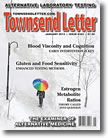
 Other technologies are also increasing the diagnostic power of the microbiology laboratory. The Vitek-2 system, for example, allows for both the identification and the antibacterial sensitivity of candidate organisms.
Other technologies are also increasing the diagnostic power of the microbiology laboratory. The Vitek-2 system, for example, allows for both the identification and the antibacterial sensitivity of candidate organisms.  John Reinhard, PhD, studied chemistry with Dr. John Neumeyer at Northeastern University (Boston, MA) before attending the Massachusetts Institute of Technology, where he earned a PhD in biochemistry in 1980, under Dr. Michael Moskowitz. He was a postdoctoral fellow in pharmacology at Yale University, under the supervision of Dr. Robert Roth. Dr. Reinhard joined the Wellcome Research Laboratories in 1982 as a senior scientist and remained as a principal scientist through two mergers, ending as a clinical researcher at GlaxoSmithKline. In 2001, Dr. Reinhard cofounded Trelion Pharmaceuticals (now Avera) and later served as senior director of clinical research at Epix Pharmaceuticals (Lexington, MA), associate medical director at Repligen Corp. (Waltham, MA), and senior director of clinical research at Ore Pharmaceuticals. In 2010, Dr. Reinhard cofounded Rhine Pharmaceuticals (Bellevue, WA) before assuming his current position as director of research, development, and medical at Diagnos-Techs. He has served on NIH advisory boards (intramural and extramural), has authored 76 peer-reviewed publications, and is listed as inventor on 6 patents.
John Reinhard, PhD, studied chemistry with Dr. John Neumeyer at Northeastern University (Boston, MA) before attending the Massachusetts Institute of Technology, where he earned a PhD in biochemistry in 1980, under Dr. Michael Moskowitz. He was a postdoctoral fellow in pharmacology at Yale University, under the supervision of Dr. Robert Roth. Dr. Reinhard joined the Wellcome Research Laboratories in 1982 as a senior scientist and remained as a principal scientist through two mergers, ending as a clinical researcher at GlaxoSmithKline. In 2001, Dr. Reinhard cofounded Trelion Pharmaceuticals (now Avera) and later served as senior director of clinical research at Epix Pharmaceuticals (Lexington, MA), associate medical director at Repligen Corp. (Waltham, MA), and senior director of clinical research at Ore Pharmaceuticals. In 2010, Dr. Reinhard cofounded Rhine Pharmaceuticals (Bellevue, WA) before assuming his current position as director of research, development, and medical at Diagnos-Techs. He has served on NIH advisory boards (intramural and extramural), has authored 76 peer-reviewed publications, and is listed as inventor on 6 patents. Raymond Dent, ND, was awarded his doctorate in naturopathic medicine from John Bastyr College of Naturopathic Medicine in Seattle, Washington, in 1982. He has practiced both privately and with teams of holistically oriented medical doctors and labs over the past 28 years. Dr. Dent has taught courses at Bastyr University, authored articles on alternative and integrated health care, and appeared on television and radio broadcasts. Dr. Dent's practice is broad in scope and utilizes therapeutic nutrition, homeopathy, and botanical medicine as well as innovative procedural approaches.
Raymond Dent, ND, was awarded his doctorate in naturopathic medicine from John Bastyr College of Naturopathic Medicine in Seattle, Washington, in 1982. He has practiced both privately and with teams of holistically oriented medical doctors and labs over the past 28 years. Dr. Dent has taught courses at Bastyr University, authored articles on alternative and integrated health care, and appeared on television and radio broadcasts. Dr. Dent's practice is broad in scope and utilizes therapeutic nutrition, homeopathy, and botanical medicine as well as innovative procedural approaches. Kamal Henein, MD, graduated from Zagazig University Medical School in Cairo, Egypt, in 1997. Dr. Kamal practiced medicine and general surgery for four years before joining Diagnos-Techs as a medical consultant. His practice focused mostly on women's health and reproduction. As a medical and science liaison who introduces bench research into clinical application, Dr. Kamal provides medical consultation to physicians, naturopathic doctors, and pharmacists involved in endocrine evaluation and patient management. Dr. Kamal has 12 years of medical experience, specializing in functional medicine.
Kamal Henein, MD, graduated from Zagazig University Medical School in Cairo, Egypt, in 1997. Dr. Kamal practiced medicine and general surgery for four years before joining Diagnos-Techs as a medical consultant. His practice focused mostly on women's health and reproduction. As a medical and science liaison who introduces bench research into clinical application, Dr. Kamal provides medical consultation to physicians, naturopathic doctors, and pharmacists involved in endocrine evaluation and patient management. Dr. Kamal has 12 years of medical experience, specializing in functional medicine.  Brandy Webb, ND, received her doctorate of naturopathic medicine from Bastyr University after earning her biochemistry degree from Seattle University. While pursuing her pre-medicine studies, Dr. Webb worked at the Fred Hutchinson Cancer Research Center studying allogeneic bone marrow transplantation. Following medical school, Dr. Webb promptly became a teaching fellow, clinical resident, and ultimately an instructor at Bastyr, teaching advanced doctoral courses in pharmacology, gastroenterology, clinical diagnosis, and gynecology. She also practices privately, specializing in functional medicine and endocrinology, with particular expertise in hormonal restoration and fertility optimization in both men and women. Dr. Webb has authored health-related articles, delivered communitywide lectures, and been featured in local radio programs and national print publications.
Brandy Webb, ND, received her doctorate of naturopathic medicine from Bastyr University after earning her biochemistry degree from Seattle University. While pursuing her pre-medicine studies, Dr. Webb worked at the Fred Hutchinson Cancer Research Center studying allogeneic bone marrow transplantation. Following medical school, Dr. Webb promptly became a teaching fellow, clinical resident, and ultimately an instructor at Bastyr, teaching advanced doctoral courses in pharmacology, gastroenterology, clinical diagnosis, and gynecology. She also practices privately, specializing in functional medicine and endocrinology, with particular expertise in hormonal restoration and fertility optimization in both men and women. Dr. Webb has authored health-related articles, delivered communitywide lectures, and been featured in local radio programs and national print publications.